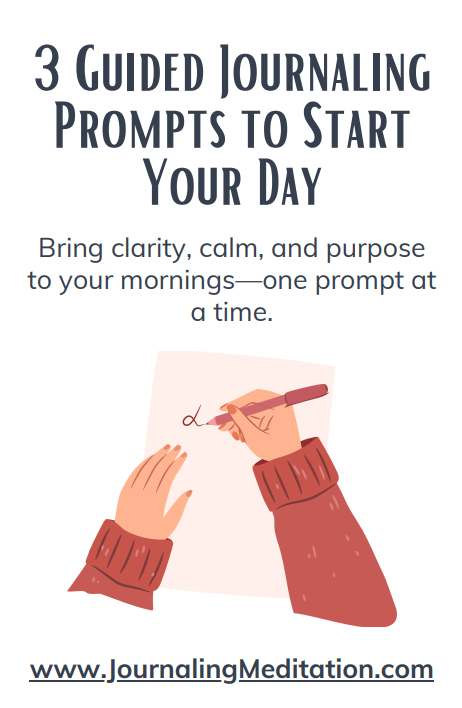
Mindfulness journaling is a powerful practice tool for those starting their mindfulness journey. With journaling so significant, let’s explore the best mindfulness journal for beginners, why it’s beneficial, what features to look for, and tips for sustaining the practice. Whether you’re new to mindfulness or want to deepen your practice, this guide can help you find the perfect journal to suit your needs.
Why Mindfulness Journaling is Beneficial for Beginners
Understanding Mindfulness Journaling
Mindfulness journaling is the act of writing down our thoughts, feelings, and experiences to become aware and present. Unlike regular journaling, it focuses on now, helping you connect with your inner self and the world around you.
Mental Health Benefits
- Reducing Stress and Anxiety: Mindfulness journaling can help manage stress and anxiety by providing an outlet for expressing worries and fears. It also encourages reflection, which can lead to a clearer mind and reduced stress levels.
- Improving Focus and Concentration: Regular journaling can enrich your ability to concentrate by training your mind to stay present. This increased focus can spill over into other areas of your life.
- Enhancing Emotional Regulation: Writing about your emotions helps you understand and manage them better. It allows you to process feelings in a healthy way, leading to improved emotional stability.
Personal Growth
- Increasing Self-Awareness: Journaling brings attention to your thoughts and behaviors, developing greater self-awareness. This awareness is the first step towards personal growth and change.
- Encouraging Positive Thinking: By regularly focusing on positive experiences and gratitude, mindfulness journaling can shift your mindset towards the good.
- Tracking Personal Development and Progress: A mindfulness journal is a great way to record your journey and showcase your growth and achievements over time.
Key Features to Look for in a Mindfulness Journal
User-Friendly Layout
A good mindfulness journal should have a simple, structured layout, making it easy to navigate. Look for journals with designated spaces for daily, weekly, and monthly entries to help you track your progress effectively.
Guided Prompts
Guided prompts are perfect for beginners because they can provide direction and make journaling less “homework’ like. Prompts such as “What am I grateful for today?” or “How did I feel in the present moment?” can be incredibly helpful.
Reflective Sections
Reflective sections allow you to look deeper into your experiences. Journals that include questions for reflection can help you gain insights on difficult or confusing situations as well as provide insight for self-awareness.
Durability and Design
The design and quality of a journal can impact your willingness to use it. Pick a journal that is aesthetically pleasing. If you like it, you’re more apt to use it. Is the layout something you were looking for? These simple qualities can enhance your journaling experience.

Top Mindfulness Journals for Beginners
Journal 1: The Mindful Life Journal
Features
- Daily prompts and reflections: This journal offers daily prompts that guide you to reflect on your thoughts and experiences, making it easy to stay on task.
- Inspirational quotes and mindfulness exercises: Each page features motivational quotes and simple mindfulness exercises to keep you engaged and inspired.
Pros
- Easy to use with a simple layout: The straightforward design of The Mindful Life Journal makes it easily usable even for those new to journaling. The uncluttered pages make certain you can focus on writing without distractions.
- Encourages consistent practice: With daily prompts and reflections, this journal helps establish a regular mindfulness routine, making it easier to build a lasting habit.
Cons
- May lack depth for advanced users: While perfect for beginners, experienced mindfulness practitioners might find the prompts too basic and not challenging enough to deepen their practice.
Journal 2: The Five Minute Journal
Features
- Morning and evening prompts: This journal is designed for quick entries, featuring prompts to start and end your day with mindfulness and gratitude.
- Focus on gratitude and affirmations: It emphasizes positive thinking by encouraging you to note things you’re grateful for and has affirmations to boost your mood and outlook.
Pros
- Quick and easy to fill out: The Five Minute Journal lives up to its name, allowing you to complete entries in just a few minutes. It’s perfect for those with a busy schedule.
- Great for building a habit: Its ease and simplicity help you develop a consistent journaling habit without feeling overwhelmed by a lengthy writing process.
Cons
- Limited space for detailed reflections: The tight format means there’s less room for in-depth reflection or exploring complex thoughts and emotions, which might be a drawback for some users who would like to explore deeper.

Journal 3: The Mindfulness Journal: Daily Practices, Writing Prompts, and Reflections for Living in the Present Moment
Features
- Comprehensive prompts and exercises: This journal offers a wide range of prompts and mindfulness exercises designed to grow your practice and enhance self-awareness.
- Sections for setting intentions and reflecting on progress: This journal includes special areas to set daily intentions and reflect on your progress, helping you stay focused and mindful.
Pros
- Detailed and well-structured: The Mindfulness Journal provides a thorough framework for mindfulness practice. This makes it an excellent tool for those who are serious about cultivating mindfulness.
- Suitable for deeper mindfulness practice: Its deeper approach and variety of prompts make it ideal for those looking for a more profound and meaningful mindfulness exercises.
Cons
- May be overwhelming for complete beginners: The extensive content and detailed exercises might be too much for those new to mindfulness, possibly causing them to feel intimidated or overwhelmed.
How to Choose the Right Mindfulness Journal for You
Assess Your Goals
Before choosing a journal, define what you want to achieve with mindfulness journaling. Are you looking to reduce stress, increase self-awareness, or track your personal growth? Knowing your goals will help you select the right journal.
Consider Your Routine
Determine how much time you are willing and able to journaling each day. If you have a busy schedule, a journal like The Five Minute Journal might be fitting. For those who can invest more time, The Mindfulness Journal may be a better choice.
Evaluate the Journal’s Structure
Match the journal’s layout with your personal preferences and what you want or can work with. Some people prefer structured prompts, while others like open entries. Choose a journal that matches your style.
Read Reviews and Get Recommendations
Look for feedback from other users to get an idea of a journal’s usefulness and effectiveness. Joining mindfulness communities can also provide valuable recommendations and insights you may have not heard of otherwise.

Tips for Starting and Maintaining a Mindfulness Journaling Practice
Set a Regular Time
Consistency is key to developing a mindfulness journaling habit. Decide whether morning or evening works best for you and stick to it.
Create a Comfortable Space
Find a quiet and inspiring spot where you can write without distractions. This will make your journaling sessions more enjoyable and productive.
Start Small
Begin with a few minutes each day, especially if you’re new to journaling. Gradually increase the time as it becomes a regular part of your routine.
Be Honest and Compassionate
Write truthfully about your experiences and feelings. It will only help. Avoid self-judgment and approach your journaling with self-compassion. Remember, this practice is for your personal growth and well-being.
FAQ Section
Still curious about how to make the most out of your mindfulness journaling practice? Here are some frequently asked questions that can help guide you:
What should I journal about mindfulness?
When journaling about mindfulness, focus on your present experiences, thoughts, and feelings. You can write about your observations during meditation, any mindful activities you engaged in, or reflections on how mindfulness is affecting your daily life. The key is to stay in the moment and document your genuine experiences and insights.
What is a guided journal?
A guided journal provides prompts and questions to help direct your writing. It often includes exercises, inspirational quotes, and specific topics to reflect on, making it easier for beginners to start journaling. Guided journals are especially useful for those who may feel overwhelmed by a blank page and need a bit of structure to get started.
Why journal mindfulness?
Journaling mindfulness helps to reinforce your practice by encouraging regular reflection and self-awareness. It helps you to track your progress, identify patterns in your thoughts and behaviors, and deepen your understanding of mindfulness. Additionally, it provides a tangible record of your journey, making it easier to see how far you’ve come and can help you stay motivated.
How to meditation journal?
To start a meditation journal, begin by noting the date and time of your meditation session. Write about the techniques you used, the duration of your practice, and any thoughts or feelings that arose during meditation. Reflect on how the session made you feel and any insights you gained. Over time, this practice will help you notice patterns and progress in your meditation journey.
What is mindful journaling?
Mindful journaling is the practice of writing with a focus on the present moment. It involves being fully aware and attentive to your thoughts, feelings, and surroundings as you write. This type of journaling helps cultivate mindfulness by encouraging a deeper connection with your experiences and encouraging a sense of clarity and calm.
—————————————————————————————-
Mindfulness journaling is a powerful tool for beginners looking to enhance their mindfulness practice. By choosing the right journal and incorporating it into your routine, you can reap the numerous benefits of this amazing practice. Don’t hesitate to start your journaling journey today.
What’s your favorite mindfulness journal? Please share your experiences and recommendations in the comments below. If you found this post helpful, share this post with friends who might benefit from starting their mindfulness journaling practice. Thank you for reading!





